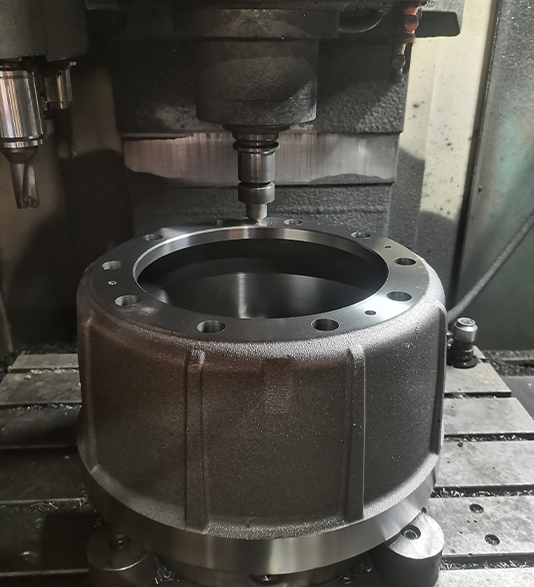Nov . 09, 2024 22:00 Back to list
Effective Methods for Maintaining and Cleaning Brake Drums for Optimal Performance
Cleaning Brake Drums A Comprehensive Guide
Brake drums are critical components of any vehicle's braking system, particularly in cars equipped with drum brakes. They play an essential role in ensuring the vehicle comes to a halt safely. Over time, these drums can accumulate dirt, grime, and even brake dust, which can impair their function and lead to decreased performance. Regular cleaning of brake drums is vital to maintaining their efficiency and extending their lifespan. In this article, we will explore the importance of cleaning brake drums, the steps involved in the process, and some tips for ensuring optimal results.
Why Clean Brake Drums?
Brake drums are subjected to immense pressure and heat during operation. The friction generated by the brake shoes against the drums helps slow down or stop the vehicle. However, as brake dust accumulates on the surface, it can create a layer of residue that affects the braking performance. Dirty brake drums can lead to
1. Reduced Performance Accumulated debris can decrease the efficiency of the braking system, making it less responsive. 2. Increased Wear Dirt and contaminants can lead to uneven wear on the brake shoes and drums, necessitating more frequent replacements. 3. Noise A build-up of brake dust can cause squeaking or grinding noises when brakes are applied.
4. Safety Risks Impaired braking performance can pose significant safety risks while driving, potentially leading to accidents.
Given these factors, it’s evident that regular maintenance, including the cleaning of brake drums, is essential for vehicle safety and performance.
How to Clean Brake Drums A Step-by-Step Guide
Cleaning brake drums is a task that can be performed by those with a moderate level of mechanical skill. Here’s a step-by-step process to help you get started
Materials Needed - Jack and jack stands - Wheel chocks - Lug nut wrench - Brake cleaner - Wire brush - Clean cloths - Safety goggles and gloves
Step 1 Prepare the Vehicle - Ensure the vehicle is on a flat surface. - Engage the parking brake and place wheel chocks behind the rear wheels.
clean brake drums

Step 2 Lift the Vehicle - Use the jack to lift the front or rear of the vehicle, depending on which brake drums you are cleaning. - Secure the vehicle with jack stands for safety.
Step 3 Remove the Wheel - Using the lug nut wrench, loosen and remove the lug nuts. - Take off the wheel to access the brake drum.
Step 4 Examine the Drum and Brake Shoes - Before cleaning, inspect the condition of the brake drum and shoes for any signs of excessive wear or damage.
Step 5 Clean the Brake Drum - Spray brake cleaner onto the surface of the drum, allowing it to loosen dirt and debris. - Use a wire brush to scrub away any grime. Focus on areas where brake dust has accumulated. - Wipe the drum with clean cloths to remove any remaining residue.
Step 6 Reassemble - Once the drum is clean, check the brake shoes again. - Reattach the wheel, securing it with the lug nuts. - Lower the vehicle and remove the jack stands.
Step 7 Test Drive - After cleaning, take the vehicle for a short test drive to ensure the brakes function correctly and listen for any unusual noises.
Tips for Effective Cleaning
1. Frequency Regular inspections and cleaning every 6,000 to 12,000 miles can prevent build-up. 2. Choose Quality Products Use high-quality brake cleaners that are safe for your vehicle. 3. Follow Safety Protocols Always wear gloves and goggles when working on brake components to protect yourself from harmful chemicals and debris.
Conclusion
Cleaning brake drums is a straightforward yet crucial aspect of vehicle maintenance that ensures safety and performance. By following the steps outlined above, you can effectively clean your brake drums and contribute to a safer driving experience. Regular maintenance not only enhances the braking system's efficiency but also prolongs the life of the components, saving you money in the long run. Remember, a well-maintained vehicle not only ensures your safety but also enhances your driving experience.
-
Scania Brake Drums: OEM Quality for Optimal Safety & Durability
NewsAug.16,2025
-
R.V.I: Advanced Remote Visual Inspection for Precision
NewsAug.15,2025
-
Discover HYUNDA: Innovative Vehicles, Equipment & Solutions
NewsAug.14,2025
-
R.V.I: Unlock Advanced Insights & Real-time Performance
NewsAug.13,2025
-
Kamaz Brake Drum: Durable & Reliable for Heavy Duty Trucks
NewsAug.12,2025
-
Heavy Duty Iveco Brake Drum - Premium Quality & Safety
NewsAug.11,2025
